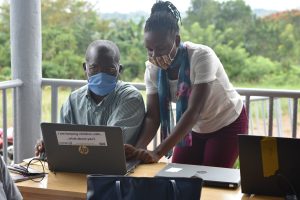EDUCATION
Girls Perform Even Better In Spite of Lockdown
How does a child who is used to learning in a school context continue to learn skills in things like literacy and numeracy when they suddenly find themselves at home for years? And how do struggling households who need to make ends meet give the time and space for children to learn rather than labour? There was an increase of child labour in Uganda from 21% to 36%, affecting girls in particular.
We worked to measure the learning of girls over the 2 years. In a benchmarking exercise in the Baseline of 2017, the results between each school grade showed girls who had no project support increasing their scores in learning tests by 4 points per year. Therefore, this is what would be expected year-on-year with no project intervention. Between the Baseline in 2017 and Midline One in 2019, girls who had been in a Creative Learning Centre and a project school progressed by 9 points each year. Girls who chose to go to other non-project schools did not make the same rate of progress.
The expected results between 2019 and 2021 would be 8 points over two years, assuming schools were open. The learning tests show that the girls increased by an average of 30 points over the two years.

11 Years: A marathon, not a sprint in education
Viva and CRANE Midline 2 Final Report
Midline 2 – Detailed findings
QIS Evaluation Report
External Evaluation Report – Summary



